In Defense of Boost Sonic
writing · · 10 min readSonic the Hedgehog. A video game franchise about a cool blue hedgehog who runs, jumps, and platforms through a variety of vast, intricate worlds. Sonic’s fast, thrilling gameplay was critically acclaimed during the series’ early days as a 2D sidescroller and won millions of gamers over to Sega and the Genesis console. But Sonic’s transition to the 3D world, marked by the arrival of Sonic Adventure on the Dreamcast, was much more divisive. Over the years, Sega experimented with many wildly different play styles, even within a single game. This lack of consistency has resulted in critical reception that ranges from “pretty good” (Sonic Generations) to “downright awful” (Sonic the Hedgehog 2006).
Sega’s first attempts at a 3D Sonic game resembled Super Mario 64 augmented with sprawling, linear levels and speed-oriented controls. Sonic could grind on rails, snap on to enemies with the “homing attack,” and gain an instant burst of speed with a charged “spin dash.” This style was featured in Sonic Adventure, its direct sequel Sonic Adventure 2, and 2006’s Sonic the Hedgehog. Critical reception of the Adventure series was very positive on release, but the re-releases and ports have not fared as well. Critics praised the games’ sense of speed but criticized their uncooperative camera and physics systems. Sonic 06 was universally panned for a multitude of technical and level design issues that stemmed from a rushed release.
In 2008, Sonic Unleashed debuted a new style of 3D platforming, often referred to by fans as “boost Sonic.” Sonic gained a new signature move, the “Sonic boost,” which granted him an instant, visually spectacular burst of speed that could be sustained as long as he collected rings. Critics widely derided Unleashed for its inclusion of a “Sonic the Werehog” mode that turned Sonic into a slow, repetitive beat-em-up character. However, they were generally receptive to the new boost style, even as they chided it for a lack of polish. With minor tweaks, boosting was subsequently featured in Sonic Colors and Sonic Generations, both of which were well-received.
Sonic fans have been divided over the boost gameplay. Some really enjoy the style, but others criticize the boost for abandoning Sonic’s traditional emphasis on momentum and exploration in favor of a singular focus on speed. They usually prefer the Sonic Adventure style, which plays slower and requires some skill and finesse to build up velocity. While these critiques have some merit, I believe that boosting Sonic is the best version of Sonic that’s ever been in 3D. It succeeds in being fast and fun as well as accessible to old and new Sonic fans alike. Examining the history of the Sonic boost, from Unleashed to Colors to Generations, demonstrates how Sega has improved the gameplay style over time to make it the most polished rendition of Sonic yet — and the reason I’m excited for this year’s Sonic Forces.
Sonic Unleashed
On the eve of the release of Unleashed, Sonic wasn’t looking too hot. 2006’s Sonic the Hedgehog, which wasn’t substantially different from the Adventure games in terms of gameplay mechanics and graphical capability, had been a critical disaster. Sonic fans — and Sega — hoped that the next entry in the franchise would mark a return to form.
Unleashed blasted its way into living rooms with two new versions of Sonic that seemed to be polar opposites. In the game’s night stages, Sonic the “Werehog” was a combat-oriented platforming character that seemed to represent everything Sonic was not supposed to be: slow and tedious. He punched and combo’d his way through wave after wave of repetitive enemies in stages that took upwards of half an hour to complete. The critics universally hated him.
It was in its day stages that Unleashed showed some promise. Sonic the Hedgehog was now boosting his way through high-speed, miles-long stages inspired by cultures and societies around the world. He took loops, grinded on rails, and blazed past enemies in caricatures of Greece, Italy, China, New York, Africa, and other iconic locations — all rendered beautifully in high-definition, courtesy of Sega’s new Hedgehog Engine.
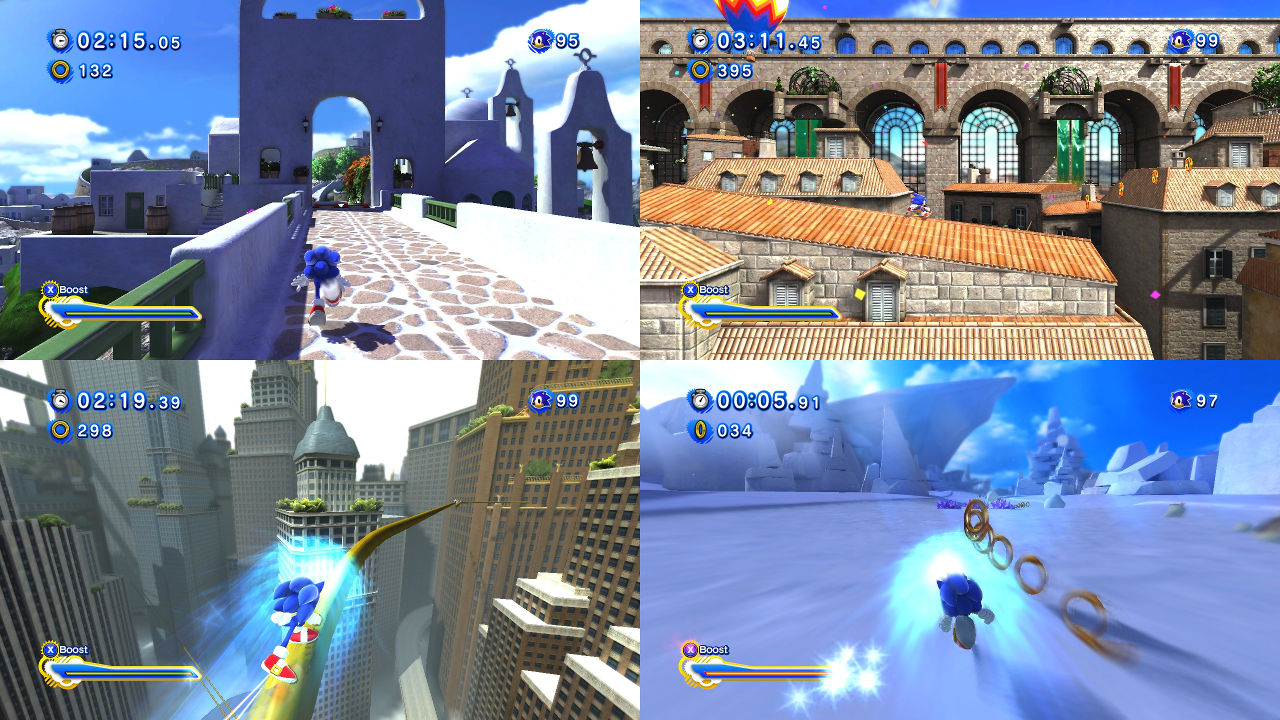
Many critics praised the daytime stages for the fast fun and sense of speed they offered. “…The daytime sections are the best Sonic has been in many years,” wrote Hilary Goldstein for IGN. Yet others weren’t so impressed. “The Sonic levels don’t fare any better than the lousy werehog parts,” wrote Tom Mc Shea for Gamespot. “[They] are poorly laid out and have unresponsive controls.”
Unlike Mc Shea, most Sonic fans agree that Unleashed’s daytime stages were enjoyable, and some even claim that in retrospect, the game featured the best version of the Sonic boost. But there is some truth to Mc Shea’s criticisms. Unleashed’s boost levels may be a thrill to watch, but they are extremely unforgiving to less-skilled players. Gotchas in the form of bottomless pits, malicious springs, and surprise obstacles abound. It takes a high degree of skill and memorization to run through Unleashed’s stages efficiently without losing lives. The game’s level design tends to punish the slightest timing mistake with instant stopping or death, as Nerd Cubed discovered in his short-lived playthrough:
There’s no way I could know that was there unless I knew that was there. Remember when you didn’t need clairvoyance to play a Sonic the Hedgehog game?
That makes the boost gameplay in Unleashed feel inaccessible, unpolished, and something only hardcore Sonic fans can enjoy.
Another issue with Unleashed’s level design is that it feels too artificial. Rails and platforms float in midair and seem to exist for the sole purpose of giving Sonic something to run across — displayed most prominently in the level “Dragon Road,” in which enormous spinning tops and dragon spines contrast sharply with the natural East Asian setting.
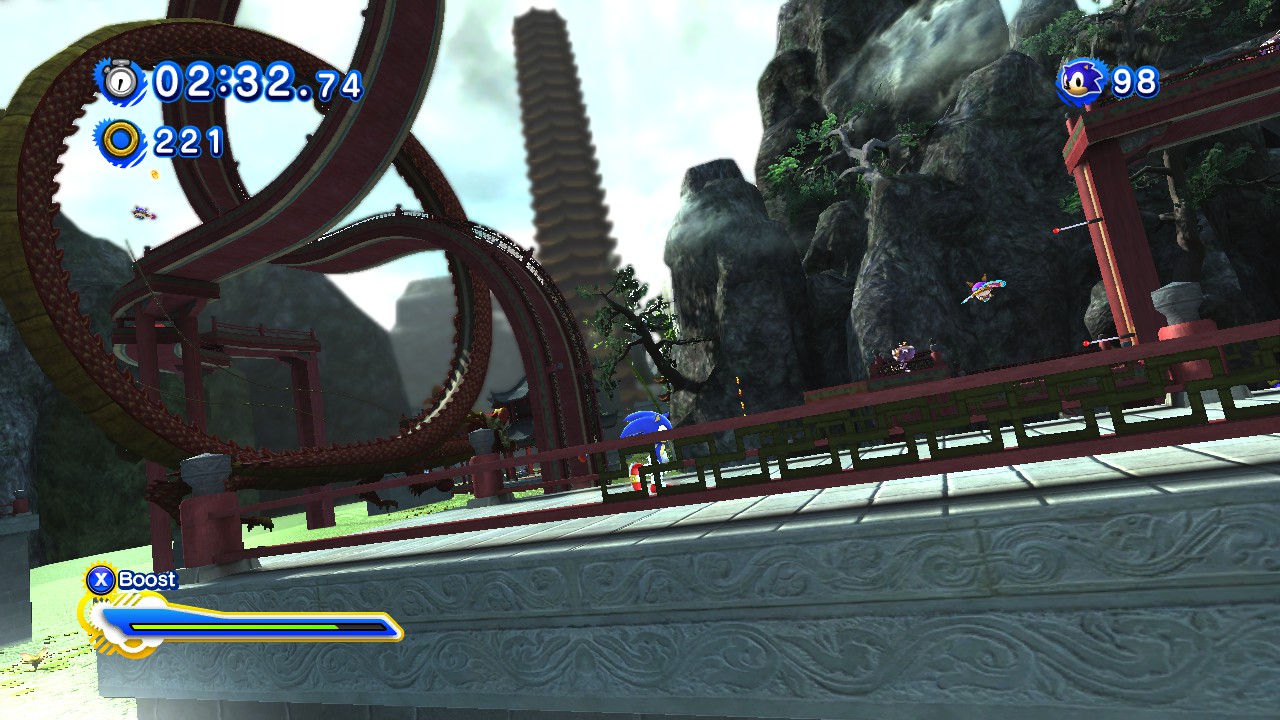
Gigantic loops and floating boardwalks feel out of place in the East Asian setting of “Dragon Road.”
Levels also feel too linear. There are few alternative paths that Sonic can take, and precisely-positioned springs, designated jumping locations, and scripted action sequences give the impression of a carefully engineered obstacle course rather than a sandbox. In his 2D days, Sonic was all about freedom. Levels were wide open and a multitude of alternative paths gave them a strong sense of verticality. Unleashed, in contrast, feels claustrophobic and constraining. The game enforces rigid solutions to get through levels, yet it lends plenty of room to mess things up badly — and little in the way of forgiveness.
Sonic Colors
After the critical failure that was Unleashed, there seemed to be little hope for the next big Sonic game. Nobody was exactly expecting the upcoming Sonic Colors — a Wii exclusive — to save the franchise, but critics and fans were pleasantly surprised. Compared to Unleashed, Colors ditched the Werehog and seriously refined the level design. For the first time in years, it seemed that Sonic was finally getting back on his feet. Arthur Gies of IGN called Colors the “best Sonic game in 18 years.”
Gone were the clunky controls and unforgiving platforming that had plagued Unleashed. Stages in Colors were shorter and easier, thanks to more polished level design and Sonic’s new double jump, and the game’s bright and attractive setting in Doctor Eggman’s interstellar amusement park compared favorably with the gritty realism of Unleashed. Finally, Sonic wasn’t just fast. He was fun, too.
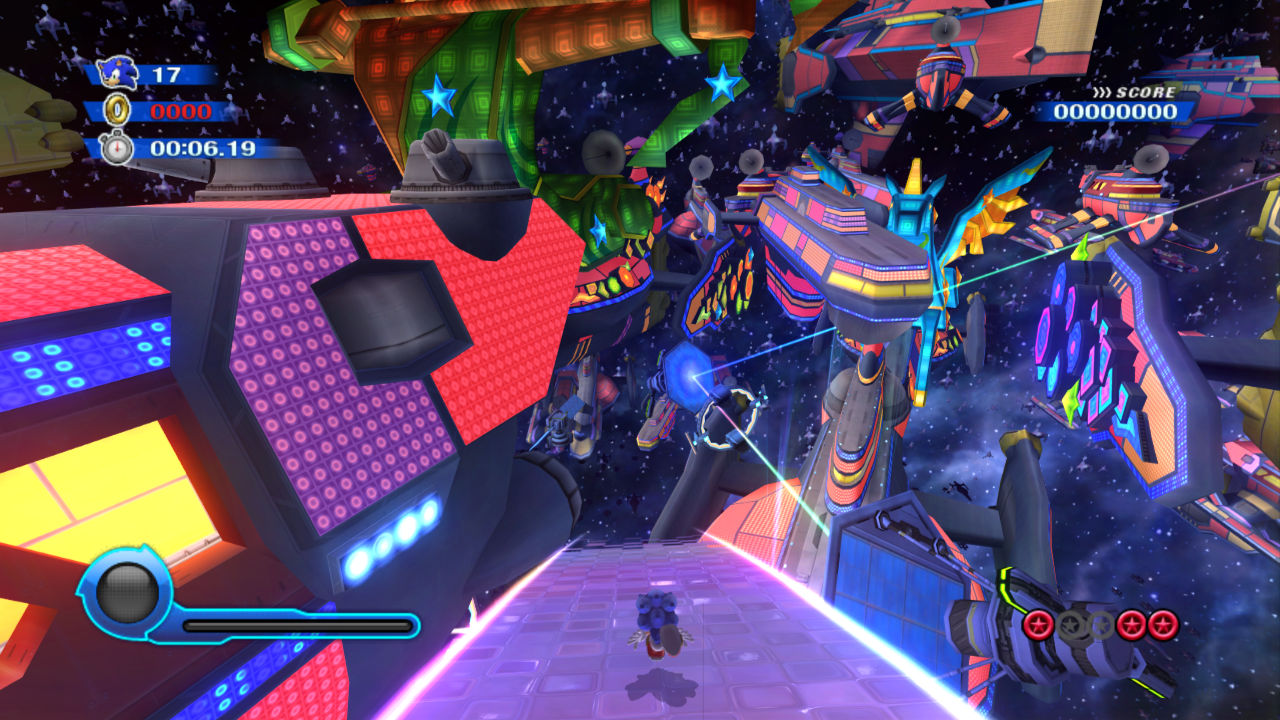
Sonic Colors is a Sonic game that feels bright and beautiful.
Except Sonic rarely feels completely free. In fact, Sonic ’06 was the last Sonic game that was wholly comprised of 3D platforming. Unleashed breaks up the 3D action with slower segments in which the camera pans away and Sonic is locked to two dimensions. In Colors, these “two-and-a-half dimensional” segments are even more ubiquitous, and entire levels are comprised of them. Although Colors is theoretically a 3D Sonic game, proper 3D sections are relatively rare — and the few that are present are designed conservatively, with an emphasis on linearity, safety, and ease of play.
Boosting now consumes a separate powerup, alien “wisps,” instead of the hundreds of rings that Sonic picks up on a regular basis. As a result, one has to be much more thrifty with the boost, and the nonstop boosting that speedrunners could enjoy in Unleashed is no longer possible.
Colors’ first stages — the opening acts of “Tropical Resort,” in which Sonic first arrives at Eggman’s amusement park — are fast, fun, and 3D-centric, but the rest ditch the high-speed action for 2D platforming that sometimes comes across as tedious. Like Unleashed, Colors’ level design is plagued by a sense of confinement. Stages can get tough — like when Sonic bounces off a moving spring over a bottomless pit — and there is often only one way to get to the end. The aforementioned “wisps” also augment Sonic with gimmicky abilities such as hovering, wall-climbing, and rocket-blasting, making stages feel even more like puzzles and less like fully realized environments.
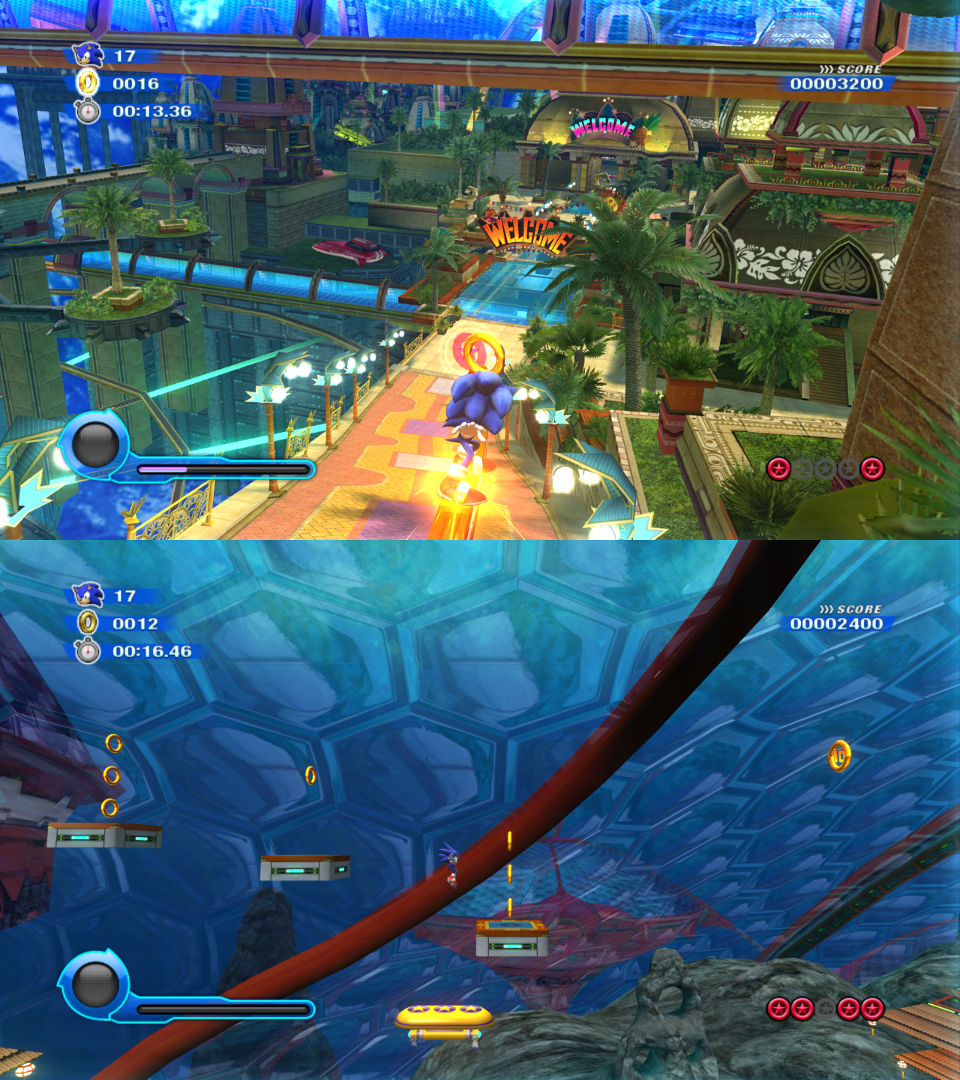
The fast, fun 3D running in “Tropical Resort” is rarely seen in the rest of Sonic Colors. Instead, it mostly consists of competently executed but occasionally tedious 2D platforming.
Colors may have exceeded all expectations, but one can’t help but feel that Sega had lost confidence in 3D Sonic. Boosting was present, but it wasn’t a primary focus of the game. Meanwhile, the 2D platforming that Colors focused so heavily on failed to recapture that sense of freedom from Sonic’s 2D days. Sega knew that for Sonic’s 20th anniversary, it would have to aim even higher.
Sonic Generations
Sonic Generations was an anniversary celebration of the entire Sonic franchise sporting modern recreations of iconic stages from every Sonic game. Like Unleashed, Generations paired boosting Sonic with another version of himself — but this time, a palatable 2D “classic” Sonic instead of the Werehog abomination. The idea was to bridge the gap between fans of both styles of Sonic, and the effort seemed to pay off for Sega. Like Colors, Generations was very well-received. Just Towell of GamesRadar called it “the best Sonic game since the hog’s Sonic 2 glory days” and also noted that “modern Sonic’s levels are the more impressive and fun.”
Indeed, boosting Sonic’s gameplay in Generations is excellent and the best of any boosting Sonic game. In Generations, Sonic’s move set is a throwback to Unleashed — gone are the wisps and double jump from Colors — but the level design is vastly superior. Sega applied the lessons it learned from the design of Colors; levels in Generations are refined and have a gentle learning curve. Alternative pathways are the key to this. One still needs to react quickly and precisely to keep Sonic on the fastest routes, but failing to do so usually drops Sonic on a lower, slower path to explore. That’s far more forgiving than Unleashed, in which the result is often a bottomless pit, and Colors, which tends to enforce a single method to get through a stage.
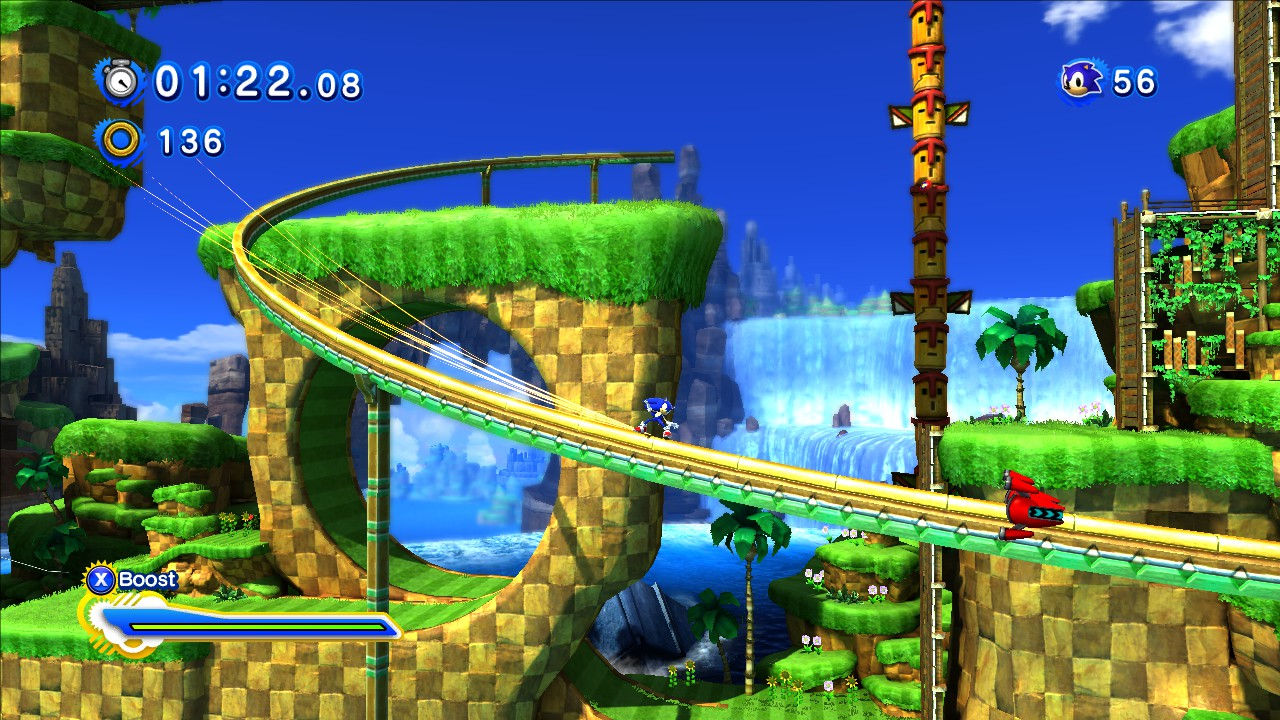
Levels in Sonic Generations sport a variety of alternative pathways, giving them a sense of openness and complexity.
As a result, Generations appeals to both old and new fans of Sonic. 3D Sonic’s problem has always been the hedgehog’s speed — it’s so much faster than any other platformer that it demands a certain amount of finesse and expertise. Generations is the Sonic game that does the best job reigning it in. The game is both challenging enough to be interesting to veterans as well as easy enough for beginners to pick up.
Generations also expertly integrates its levels with their surrounding environments. From Green Hill Zone to City Escape to Seaside Hill, Sonic’s world is consistently bright, wide open, and expansive. Each level’s platforms and segments are seamlessly composed with the buildings and hills in its setting, while intricate background models hint at a living world beyond. Combined with the abundance of alternative routes that often have a vertical component to them, the level design in Generations successfully evokes that sense of sandboxed play that the classic Sonic games captured so well.
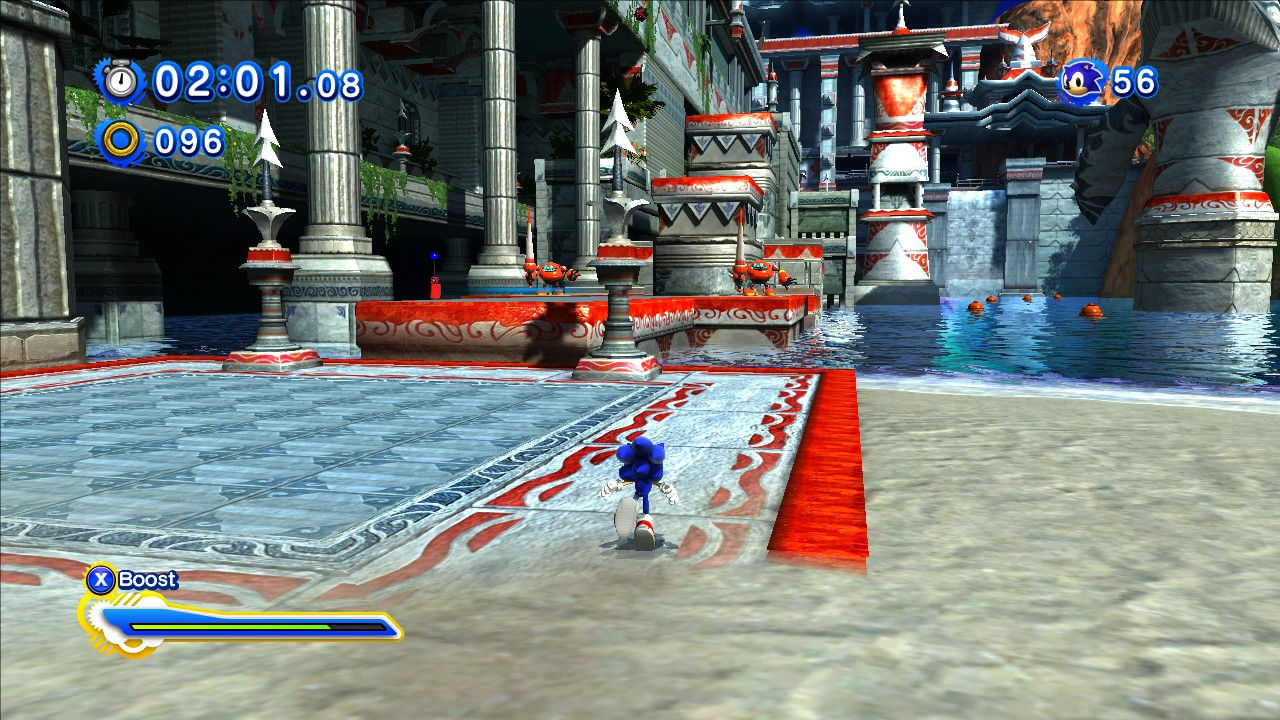
Generations brilliantly incorporates its level design into the big picture.
Generations isn’t perfect. Many fans nitpick the game’s boosting levels, arguing that they are too short as well as shallow compared to the momentum-focused levels in the classics. Still, it’s clear that Sega learned from its past mistakes. Generations is a great game because it brings Sonic to a wide audience,2 not just hardcore Sonic fans used to the franchise’s quirks. Its rendition of boosting Sonic is not only the best Sonic’s played in a long time; it’s the most polished and accessible version of 3D Sonic yet.
Conclusion, and looking forward
3D Sonic has always been a tough nut for Sega to crack. Stiff controls, an uncooperative camera, and frustrating physics have been staples of Sonic games for many years. But with the boost gameplay used in Generations, Sega’s come closer than ever to a truly appealing, accessible form of 3D Sonic — and that’s no accident. It got there by drastically improving on the level design from the claustrophobic, unforgiving stages in Unleashed to the open and gentle stages in Generations.
Many Sonic fans argue that the boost gameplay feels constraining due to the use of 2.5D platforming sections and scripted action sequences. It’s true that both are featured heavily in the boosting games, but their purpose is to strike the right balance between freedom and polish. Incorporating Sonic’s speed into a true 3D platformer — which is already very difficult to design — is a seemingly impossible task. Inevitably, there must be a compromise between new players not used to Sonic’s speed and experienced players who demand challenging and interesting level design. With the boost gameplay — and some additional refining — Sega has finally achieved that.
Looking ahead, the boost gameplay is set to return in this holiday’s Sonic Forces. Sega says that the game will combine the best aspects of Colors and Generations, and from the modern Sonic gameplay recently demoed at E3, that looks to be the case. Sonic’s boost will once again powered by wisp energy instead of rings, meaning boosting will have to be done conservatively and strategically as in Colors rather than more-or-less constantly as in Unleashed and Generations. The double jump from Colors also returns, which could appeal to non-Sonic fans and make for some interesting level design.
I must confess that the “Park Avenue” stage Sega has unveiled feels a little too linear for my taste. But overall, it looks as enjoyable and polished as any Generation__s stage, and I’m excited to play through the rest of Forces when it comes out this winter.
Sega has a 3D Sonic formula that works — boosting made Sonic cool again. If this is the new Sonic, I’m a fan.
- Note: All screenshots of Sonic Unleashed were taken with the Unleashed Project, a fan-made port of the Unleashed daytime stages to Sonic Generations.
- Myself included!